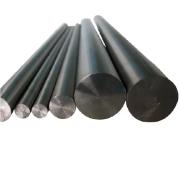**Title: “Zapped by Style: Could Your Snazzy Metal Outlet Cover Be Secretly Plotting Against You?”**
(Is It A Safety Concern To Have A Metal Wall Plate On An Electrical Outlet)
Picture this: You’ve just renovated your living room, swapping out dated decor for sleek, modern vibes. Your outlets, once cloaked in boring plastic, now flaunt shiny metal wall plates that glint like tiny superhero shields. But wait—amid the glam, a nagging thought flickers. *Is that chic metal plate secretly a ticking time bomb?* Let’s unravel the electrifying mystery.
First, let’s zap into the basics. Electrical outlets are like the silent workhorses of your home, delivering power without fanfare. The wall plate’s job? To cover the wiring and keep curious fingers (or rogue popcorn kernels) from diving into danger. Plastic plates have long been the default—cheap, lightweight, and non-conductive. Metal plates, though? They’re the James Bond of outlet covers: suave, durable, but with a hint of intrigue. Could their conductivity turn them into accidental villains?
Here’s the shocker: Metal itself isn’t inherently dangerous. The real plot twist lies in *installation* and *circuit integrity*. If your outlet is properly grounded and the metal plate isn’t tampered with, it’s as harmless as a kitten in a bowtie. Grounding acts like a safety net, redirecting stray currents safely into the earth. But if your wiring is older than your grandma’s fruitcake recipe, or if the plate isn’t snugly secured, things could get spicy. A loose screw or frayed wire brushing against the metal might turn your outlet into a spark-generating disco ball. Yikes.
Now, let’s talk about the “ouch factor.” Imagine plugging in your phone charger and getting a tiny zap—like a static shock but with a side of existential dread. If the metal plate isn’t grounded, it could become energized, turning everyday tasks into a game of *Operation*. This risk skyrockets in damp areas like bathrooms or kitchens, where water and electricity mix like oil and fire. Metal plates here? Maybe not the best wingman.
But don’t toss those stylish covers into the recycling bin just yet! Modern electrical codes often greenlight metal plates *if* the system is grounded correctly. Homes built post-1960s typically have this covered (pun intended). If you’re rocking an older abode, though, it’s worth playing detective. Unscrew a plate and peek inside: If you spot a grounding wire (usually green or bare copper) hugging the outlet’s metal frame, you’re golden. No ground wire? Cue the ominous music. Time to call an electrician—or stick with plastic until your wiring gets a glow-up.
Another pro tip: Not all metal plates are created equal. Opt for ones labeled “UL-listed” or “CSA-certified,” which means they’ve survived rigorous testing and won’t morph into mini lightning rods. Avoid DIY hacks like painting plates (paint can chip and interfere with conductivity) or using plates with sharp edges that could gnaw on wires like a hyperactive beaver.
Still feeling jittery? Let’s bust a myth. Some folks fear metal plates increase fire risk. In reality, fires usually stem from overloaded circuits or faulty wiring, not the plate material itself. Metal might even offer a smidge more protection against accidental sparks compared to plastic, which can melt under extreme heat. But again—this all hinges on proper installation. A wonky outlet is a wonky outlet, no matter how fancy its armor.
So, what’s the verdict? Metal wall plates are like a tailored suit: sharp and reliable when fitted right, but a disaster if the seams split. If your home’s wiring is up to code and you’re not hosting splash zones near outlets, go ahead—let those metal plates shine. They’re tough, fire-resistant, and immune to yellowing (unlike their plastic cousins). But if your electrical system’s stuck in the disco era, play it safe with plastic until you upgrade. After all, style shouldn’t come with a side of suspense.
(Is It A Safety Concern To Have A Metal Wall Plate On An Electrical Outlet)
In the end, your outlet cover isn’t plotting against you—unless you ignore the basics. Treat your wiring with respect, and even the snazziest metal plate will stay firmly in the sidekick role, not the supervillain. Now go forth and electrify your space… safely.
Inquiry us
if you want to want to know more, please feel free to contact us. (nanotrun@yahoo.com)


